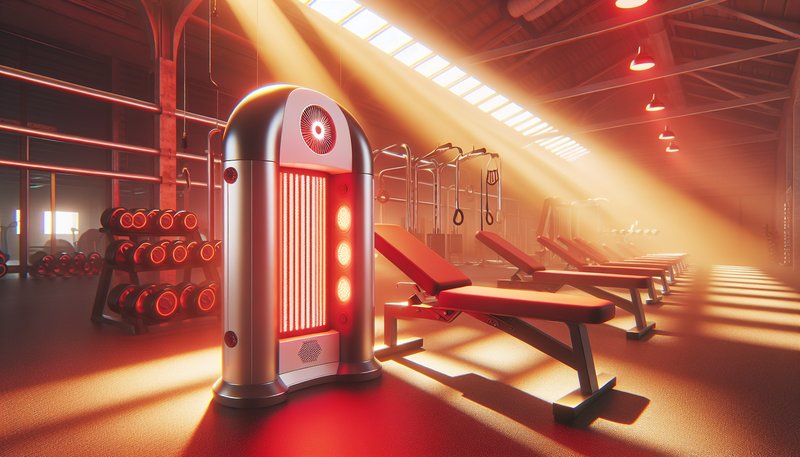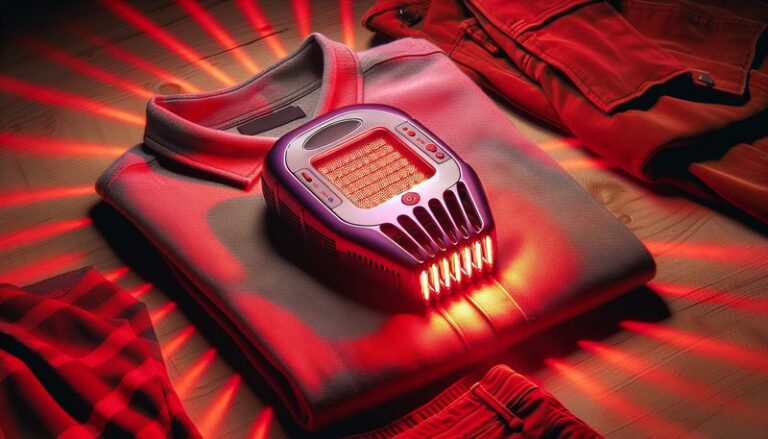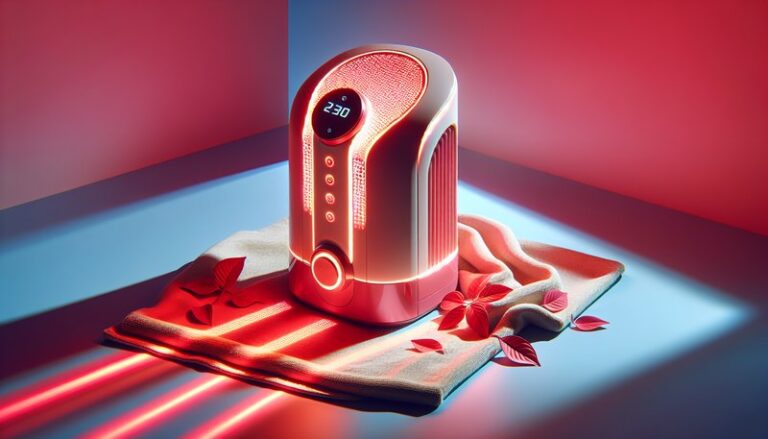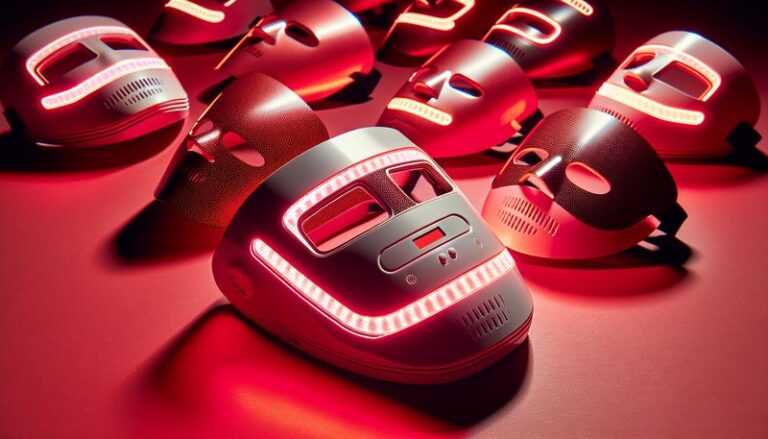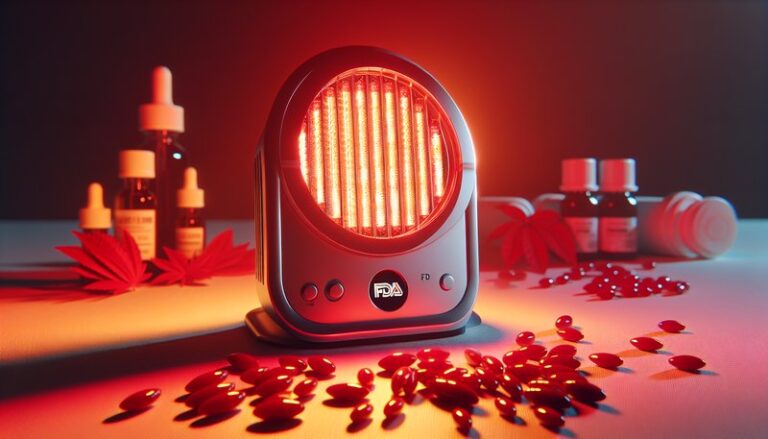What Is Red Light Therapy At The Gym?
Have you ever wondered how elite athletes and fitness enthusiasts seem to recover so quickly after grueling workouts? One of the secrets might be red light therapy, a treatment gaining traction in gyms around the world.
Discover the analysis in Can Red Light Therapy Help?
In this article, we will explore what red light therapy is, the benefits it may offer to gym-goers, how it can be integrated into workout routines, and some considerations before you try it yourself. Whether you are looking to enhance your recovery or improve your overall performance, red light therapy could offer a viable solution.
Key Takeaways
- Red light therapy uses low-level wavelengths to promote healing and muscle recovery.
- Benefits include reduced inflammation, improved skin health, and enhanced muscle recovery times.
- It can be integrated easily into gym routines and is considered safe for most people.
What is Red Light Therapy?
Red light therapy (RLT) is a non-invasive treatment that utilizes low-level wavelengths of red light to stimulate cellular function. This technology has been used in various therapeutic applications and has garnered interest for its potential benefits in sports and fitness.
RLT works by penetrating the skin and energizing the mitochondria—often described as the “powerhouse” of cells. This process enhances cellular repair, reduces inflammation, and increases blood flow, all of which contribute to quicker recovery times and improved performance.
How is Red Light Therapy Administered?
There are various ways to experience red light therapy at the gym:
- Standalone Devices: Many gyms have dedicated red light therapy panels that users can access post-workout.
- Integrated Equipment: Some gyms offer machines that combine traditional workouts with red light therapy for enhanced benefits.
- Portable Devices: Personal handheld devices are also available for those who prefer a more individualized experience.
What are the Benefits of Red Light Therapy?
Exploring the benefits of red light therapy reveals its potential to complement gym routines and improve overall fitness outcomes.
Improved Recovery Times
One of the most significant advantages of using red light therapy after workouts is its ability to speed up recovery times. Research shows that individuals who use RLT may experience reduced muscle soreness and quicker healing of injuries compared to those who do not.
Enhanced Muscle Performance
Studies indicate that RLT can positively impact muscle performance. By increasing blood flow and reducing oxidative stress, athletes may find that they can train harder and longer while experiencing less fatigue.
Reduced Inflammation
Another important benefit of red light therapy is its potential to decrease inflammation. Gym-goers suffering from sore or swollen muscles may find significant relief through regular RLT sessions, which can help facilitate a more consistent workout schedule.
Improved Skin Health
In addition to athletic performance, red light therapy can promote better skin health by stimulating collagen production. This can help athletes manage skin conditions like acne or improve the appearance of scars, a common concern for those who spend a lot of time outdoors or in high-energy environments.
Mood Enhancement
Some studies suggest that RLT may also help improve mood and energy levels, further enhancing workout motivation and overall mental well-being.
Is it Possible to Integrate Red Light Therapy Into Your Gym Routine?
Yes, integrating red light therapy into your gym routine is both feasible and straightforward. Many fitness centers now offer RLT sessions as part of their recovery programs.
What are the Advantages of Integration?
- Convenience: Many gyms provide red light therapy options within the facility, making it easy to incorporate into a regular workout schedule.
- Enhanced Workout Protocols: Combining RLT with pre- or post-workout sessions can amplify workout results and recovery.
- Community Support: Participating in therapy at the gym promotes an environment of shared experience and motivation.
What are the Disadvantages of Integration?
- Cost: Some gyms may charge extra for RLT sessions, which can add up over time.
- Time Commitment: Finding time for additional therapy outside regular workouts may require scheduling adjustments.
- Access: Not all gyms have red light therapy available, limiting options for some individuals.
What are the Things to Consider Before Trying Red Light Therapy?
Before engaging in red light therapy, consider the following factors:
Consultation with a Professional
Always consult with a healthcare professional or fitness expert before starting any new treatment. They can provide tailored advice based on personal health circumstances.
Equipment Quality and Safety
Ensure that the red light therapy devices used at the gym are of high quality and adhere to safety standards. Inferior devices may not deliver effective results and could potentially cause skin irritation.
Consistency of Use
For optimal results, consistency is key. Consider how frequently you will be able to commit to RLT sessions and whether that aligns with your recovery goals.
Personal Health Conditions
Individuals with specific medical conditions, such as a history of photosensitivity or skin disorders, should assess their suitability for red light therapy.
What are the Alternatives to Red Light Therapy?
While red light therapy offers numerous benefits, there are alternative recovery options you might consider:
Explore Red Light Therapy for Acne?
Cryotherapy
This involves exposing the body to extremely cold temperatures to reduce inflammation and aid recovery. It can be an effective alternative for muscle soreness.
Compression Therapy
Using specialized garments, compression therapy helps improve circulation and reduce swelling, making it a popular choice after heavy workouts.
Massage Therapy
Regular massages can enhance recovery by improving circulation and relieving muscle tension. It’s an important part of many athletes’ post-workout routines.
Foam Rolling
Self-myofascial release using foam rollers is an effective way to relieve sore muscles and improve flexibility without any specialized equipment.
Conclusion: Is it Recommended to Try Red Light Therapy at the Gym?
Red light therapy presents a promising avenue for athletes and gym enthusiasts looking to improve recovery times, enhance performance, and manage muscle soreness. While there are considerations to keep in mind, the benefits are substantial, making RLT a recommended addition to a balanced fitness routine.
Frequently Asked Questions
How often should I use red light therapy?
Most experts suggest using red light therapy 2-3 times a week for optimal results, depending on individual goals and recovery needs.
Does red light therapy have any side effects?
Red light therapy is generally considered safe, but individuals with specific skin conditions or sensitivities should consult a doctor before proceeding.
Can I perform red light therapy at home?
Yes! Portable red light therapy devices are available for home use, allowing for continued recovery outside the gym.
What should I wear during my red light therapy session?
It’s advisable to expose the skin as much as comfortably possible during RLT sessions, although you should avoid any products that may obstruct light absorption, such as lotions or oils.
Is red light therapy suitable for everyone?
While most people can safely use red light therapy, individuals with certain medical conditions or skin sensitivities should consult their doctor first.
